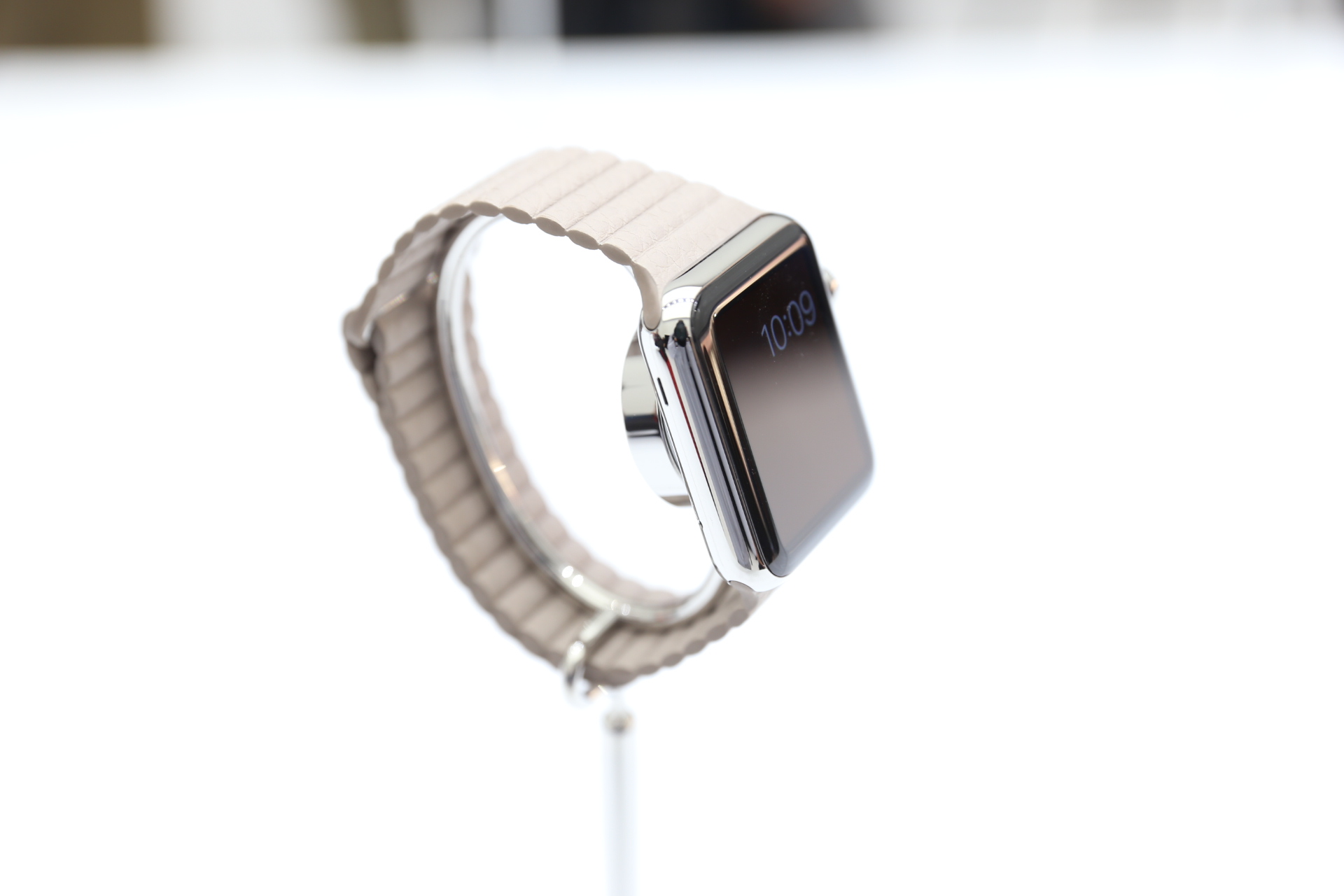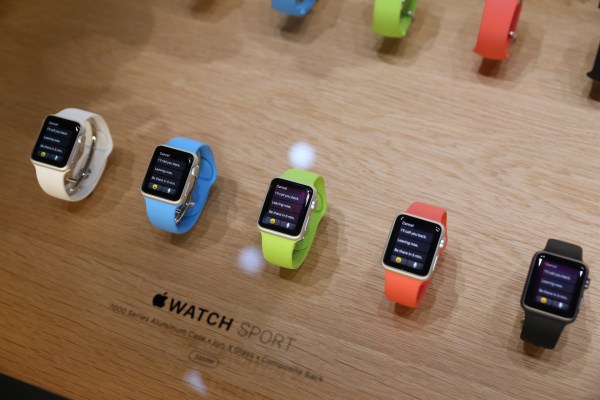Apple’s upcoming wearable still prompts a lot of questions, not least of which is how long it will last on a full charge of its battery. A new report form 9to5Mac suggests that Apple is looking at a smartwatch that will offer 2.5 hours of continuous use for processor-intensive applications like games, 3.5 hours for continuous use of standard apps and 4 hours of active fitness tracking in the background. Apple’s target for mixed use is 19 hours, including long periods where the display is off, but the initial hardware might not quite live up to that expectation, per 9to5Mac’s sources.
The report also claims that the Apple Watch team had hoped for higher numbers, and that it also helped contribute to a supposed delay of launch plans from late last year to early next. And at first glance, the number on paper might provoke some head-scratching or looks of concern among Apple Watchers; 3.5 hours of app use sounds abysmal when measured up against devices like the iPhone, for instance.
But even if Apple falls somewhat short of these figures, it’s likely not going to hurt the consumer success of the wearable, for a few reasons. One of them is that this device is in reality meant to be an occasional use gadget, and the initial limitations for developers backs that up. Apple is setting developers up to use the platform as a conduit for essential information from the smartphone, and a triage device that works precisely because it allows for quick action, rather than prolonged use sessions.
Apple also has existing device capabilities working to its advantage – the field of Android Wear devices generally offer about the same in terms of battery consumption, with some probably doing worse, and some slightly better. The point is that consumer expectation is primed for lower active use times, and daily charging. Battery life is a metric that Apple will have to match, or improve upon with each successive generation, but it can start where consumer expectation for wearables already is, so long as it delivers a superior experience in other regards.

Which leads to the next point working in Apple’s favor: The original iPhone promised only five hours of “talk, video and browsing” time, which was meagre compared to the luxurious long life of competing smartphone devices from the likes of BlackBerry. The Apple Watch, as described in this report, won’t be that far off, and it’s intended for use sessions that should be far shorter and less taxing on its internal powerhouse.
The original iPhone actually fell quite short of some of its competitors in this regard, but the experience was enough to answer the naysayers who argued no one would want to deal with the hassle of a phone you had to charge every day (GASP). Obviously, people were more than willing, and that was in a market where there were options that scored far better in terms of battery expectations, which in this case there really are not, barring the Pebble, but I think the Pebble is actually a good analog to BlackBerry in terms of the competitive landscape Apple will encounter when it debuts the Apple Watch, as its experience pales in similar ways.
For all the complaints about battery life on contemporary devices, it hasn’t seemed to seriously hamper sales of any device type, or specific hardware to date in a way that jeopardized the viability of the product. Apple can shoot for table stakes in this instance, so long as everything else offers a new level of polish and functionality.
